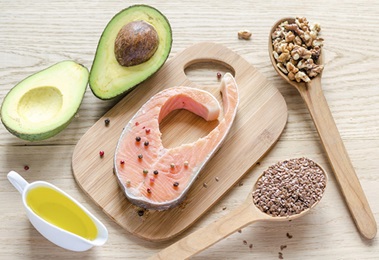Berry Good for Your Heart
When it comes to foods that both taste great and are great for your heart, it’s hard to beat the berry. Berries of all kinds are rich in antioxidants — substances found in certain foods that help fight cell damage.

“Antioxidants work everywhere in the body, including the heart,” says Johns Hopkins registered dietitian Kathleen Johnson, M.A., R.D., L.D.N. They’re best consumed in real, whole foods — not supplements — especially colorful fruits and vegetables.
Berries count among the most delicious and most versatile sources of these phytonutrients (plant-based chemical compounds). The various types of berries have slightly different qualities and amounts of these nutrients, so it’s great to mix them up in your diet. Just remember to eat berries in moderation, Johnson says, because they do contain sugar. “Fresh or frozen is better than dried,” he adds. “Dried berries have only 20 percent as many phytonutrients, and more sugar.”
Meet the best of the berry crop:
Blueberries
Although they contain more sugar than other berries (15 grams per cup, compared to 5 grams for raspberries), this easy-to-find berry contains many different types of phytonutrients.
Buying and storage tips: When they’re in season (June to August), buy enough to freeze for later; adding some vitamin C powder first will keep them fresh even longer. Store fresh berries in the crisper section of your refrigerator and don’t rinse until you’re ready to use.
Eating tips: “Put down the processed blueberry-flavored snacks and eat them whole,” Johnson says. Try adding a handful to a smoothie for sweetness.
Blackberries
“They’re kind of underplayed and underappreciated,” Johnson says. They’re also among the berries highest in antioxidants and fiber, and they have been less cultivated than blueberries, meaning what we eat today is closer to the fruit that once existed in the wild.
Buying and storage tips: Like most berries, blackberries are seasonal in late spring and summer. Store them in the fridge, but not the crisper, and eat within a few days.
Eating tips: Check farmers markets for blackberries’ close kin — the loganberry, boysenberry and marionberry. You can also buy these berries frozen and defrost them in the microwave to add to cereal or atop yogurt.
Strawberries
Their bright red color helps you “eat the rainbow,” an easy way to ensure you’ll consume a rich variety of nutrients.
Buying and storage tips: Because strawberries rank No. 4 on the Environmental Working Group’s Dirty Dozen list of foods high in pesticides, Johnson recommends springing for organics. “Washing berries doesn’t help because the pesticide is in the soil and grows into the berry itself, which also has no protective skin,” she explains. Look for berries that are red all over — no white — as they have more antioxidants and better taste.
Eating tips: Try slicing them onto green salads.
Other Great Berry Choices
Raspberries: These familiar favorites taste surprisingly sweet for berries so low in sugar (5 grams per cup).
Cranberries: Many women know they’re helpful in warding off urinary tract infections; they’re also the berries lowest in sugar (4 grams per cup). Eat them whole, rather than as juice, which has all of the sugar (and often, more), none of the fiber and half the phytonutrients.
Golden berries: Their yellow-gold color means they contain a slightly different nutrient package, Johnson says — and they make a berry salad look great!
Which Berry is Most Nutritious?
They’re all healthy choices, but the “best” distinction may well go to black raspberries, says dietitian Kathleen Johnson. A raspberry cousin with a deeper color, they provide very high antioxidant levels along with fiber and relatively little natural sugar. “They’re the most nutrient dense of all the berries,” she says. Tied for a close second, she says, are blackberries and their cousins, marionberries.






